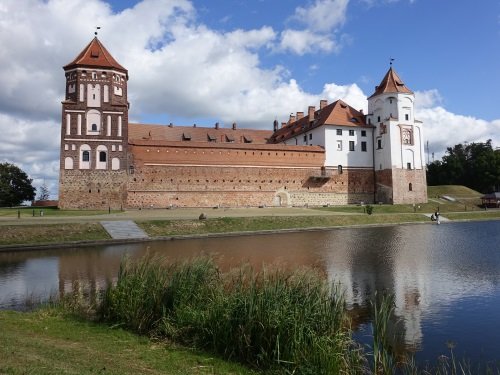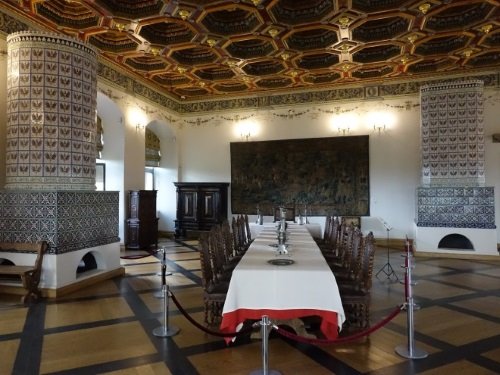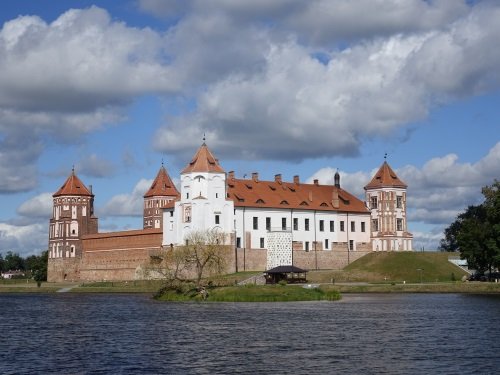The last review on this website of
Mir Castle
dated from 2010. It is however the most prominent tourist attraction of Belarus, receiving 300,000 visitors a year. I went there on a day trip from Minsk, with a car and driver for the day (we also covered nearby Nesvizh on the same tour). Driver Roman was pleasant company, and he made sure that I was given audioguides in English at both locations to learn more about their backgrounds. This approach made the tour considerably less expensive than taking a guide in person with us for the day.

|
|
First impression
|
Mir Castle only lies an hour away from Minsk, and is accessible from the country’s main highway to Brest (we fantasized that we could drive straight ahead, all the way to Amsterdam via Warsaw and Berlin, a drive of at least 1,700km). We arrived at Mir at the opening hour of 10 a.m.
The reconstruction of the castle only has been finished since 2013. Entrance costs 10 BYN (New Belarus Ruble), quite expensive at 4.5 EUR: this is far more than the average main course in a restaurant in Minsk. Access to the interior of the castle is now one of the main attractions: 6 years ago it was still completely bare inside, now the rooms have been filled with objects commonly associated with European late medieval castles (canonballs, armoury, hunting trophies). There are also many portraits of the families who lived in this castle. Almost everything on show is a reproduction: the real valuables have long ago been carried away, to museums in Warsaw for example. Still it gives an idea of how it must have looked like. There’s even a reconstruction of the wine and beer cellar!

|
|
Dining room, including heaters with Radziwill coat of arms
|
Belarus has very few 'old' things left: both the First and the Second World War and the Soviet era are to blame. Only in 1991 they seriously started to renovate the castle, after it had been empty for decades and had served as a POW camp. The castle barely got in on the List: it is part of our infamous
Inscribed at third attempt or more
connection. During my pre-visit research (carried out between 5 and 6.30 a.m. in the morning of the same day that I went there!), I found out that ICOMOS originally even had advised ‘Rejection’ at its first try in 1991. A study had confirmed that it was of “a type that is not uncommon in this area of Central Europe”, and they did not see sufficient quality.
I spent 1.5 hours on site, taking in the castle’s interior, the brick chapel on the grounds (closed) and doing a full loop around the lake. Men were even fishing there. From the wooden bridge on the far side of the lake, one has the best view of the castle - with four of the five towers in sight. The very different design of these towers clearly is the castle’s Unique Selling Point.

|
|
View from across the lake
|
In the course of the morning a lot of other visitors had arrived. All three car parks were fully occupied when I returned to the gate to drop off my audioguide. Most arrivals seemed to consist of Belarusian day trippers. The influx of Western European tourists, as is seen in Vilnius for example, is still far away here.



